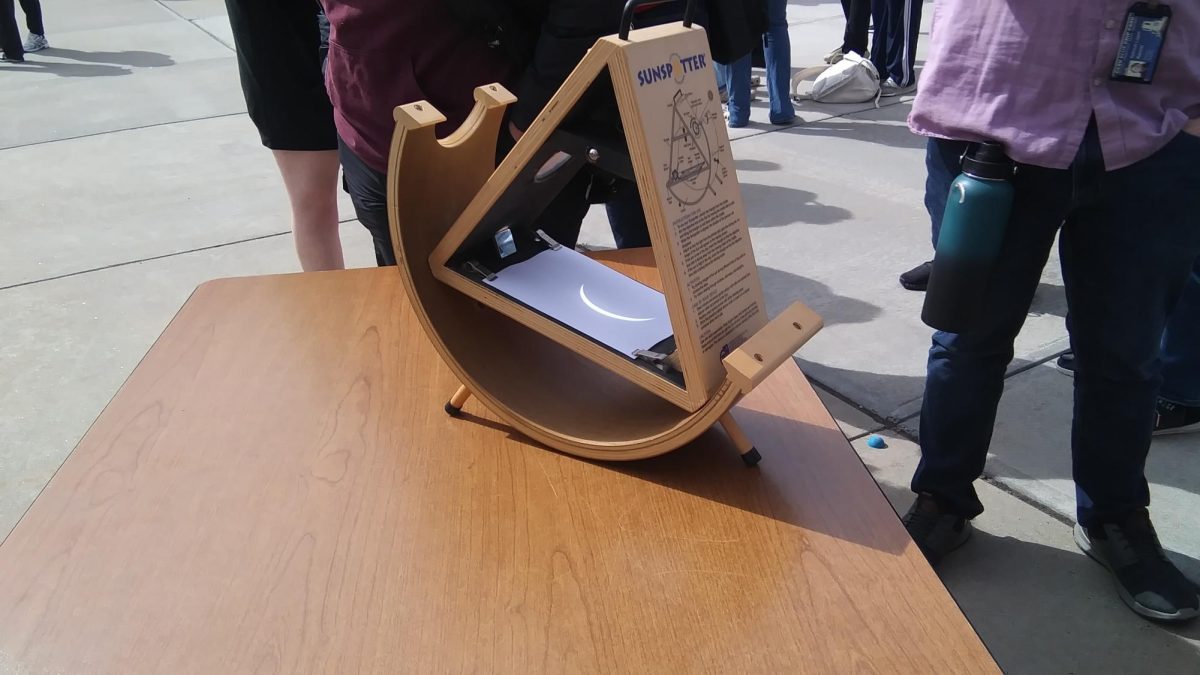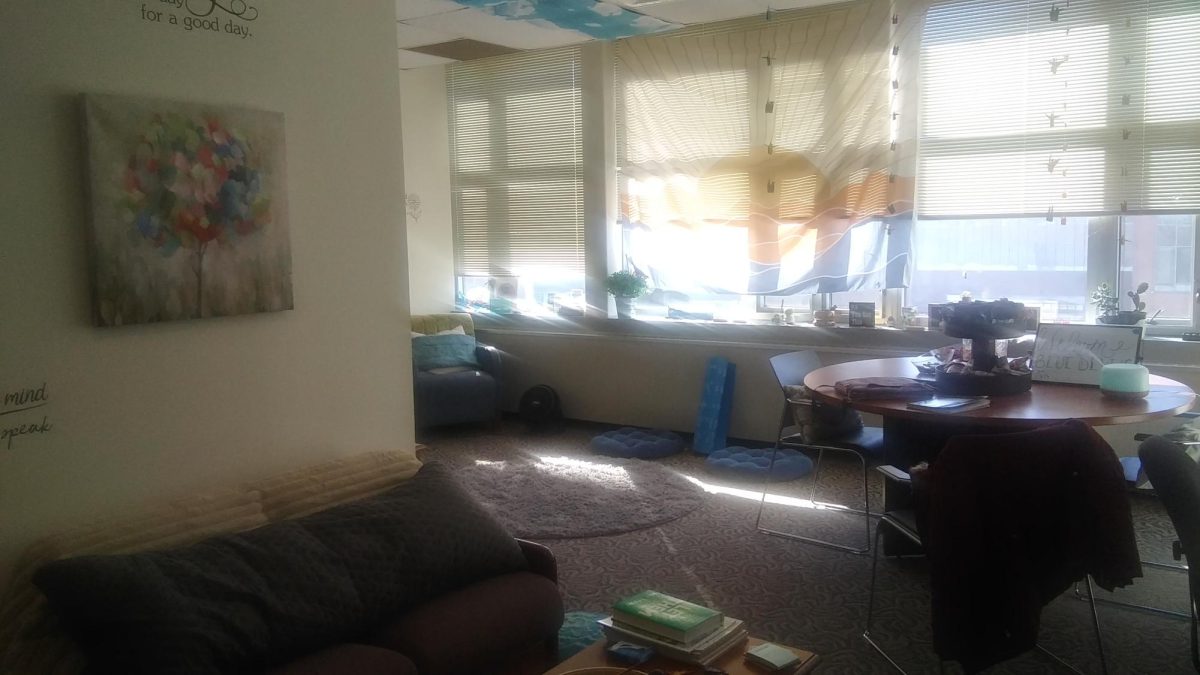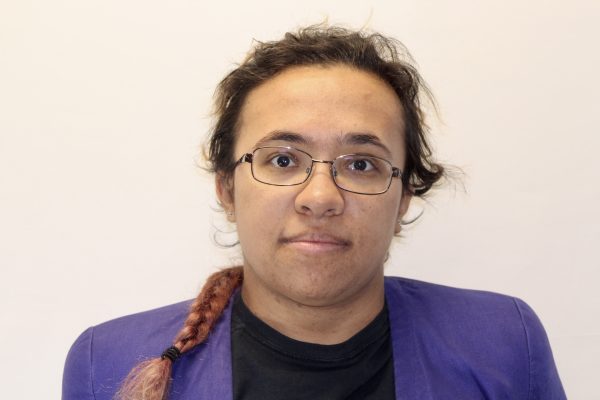Students gathered in front of Elihu Burritt Library at Central Connecticut State University to watch a solar eclipse on Monday, April 8.
Named the Great North American Eclipse, the eclipse was visible across a northeast path through southern Mexico, the American Midwest, and eastern Canada. As Connecticut was not in the path of totality, it was only a partial eclipse. Still, the sun was about 93% eclipsed, according to an email sent by the CCSU Astronomy Department.
CCSU held an eclipse viewing event to start at 2 p.m. when the eclipse was set to officially begin. Students gathered long before that in anticipation of seeing an eclipse occur on campus. Students were buzzing with excitement and expectation as the eclipse time drew nearer.
Sean McGill said he was excited and a little intimidated about the eclipse. He said that while viewing the eclipse could cause potential eye damage, it would still be an interesting experience.
“I just want to see it turn dark,” McGill said. “Everyone’s here for that.”
At the beginning of the event, staff passed out eclipse-viewing glasses inside the library on a first-come, first-served basis. Only 50 glasses were initially available. An additional 50 were made available at around 2:40 p.m. Students swarmed to get their own pair, creating a hectic environment. Due to the limited supply, staff advised that students share the provided eclipse glasses. Some alternative devices were made available to view the eclipse, including a Sunspotter Solar Telescope and homemade tools.
Rebecca Maugy said that this was her first time seeing an eclipse, and it was crazy to see how cold it got because of the eclipse and the sun disappearing. She said she could not get her own pair of eclipse glasses and had to share them with others.
“I wish that there were more available, but I understand that they couldn’t have anticipated how many people showed up,” Maugy said.
Things calmed down once all the glasses were gone, and students settled in to share glasses and watch the eclipse as it occurred. Viewing the eclipse through the glasses proved to be an astounding sight. Through the glasses, one could see that the moon gradually covered up the view of the sun.
The darkness became noticeable at around 3 p.m., and the temperature dropped. Students excitedly looked up at the sky as the eclipse continued. Many students attempted to take pictures of the eclipse on their phones through their eclipse glasses.
The apex of the eclipse was at 3:30 p.m., with the majority of the sun eclipsed and only a sliver visible from behind the moon. Afterward, the eclipse slowly ended until about 4 p.m., when the moon had moved fully out of the way of the sun. The sky turned cloudy as the eclipse ended, blocking people’s view. Most students had cleared out before the eclipse completely ended.
The eclipse was an incredible experience to have on campus, especially since total solar eclipses are an uncommon occurrence. Everyone in attendance seemed to enjoy seeing this kind of celestial event.
Kasper Peszko said this eclipse was a once-in-a-lifetime opportunity and an amazing phenomenon. He said it was cool seeing so many students gathered on campus to witness the eclipse together.
“We see the sun and moon every day, but not like this,” Peszko said. “It’s a super cool experience.”








